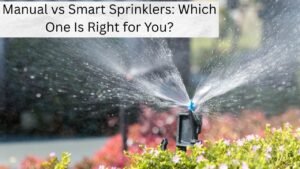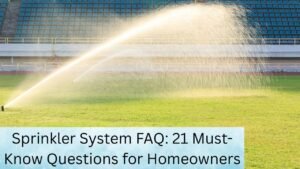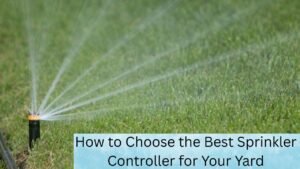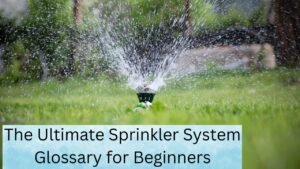Choosing the right sprinkler system in 2025 isn’t just about keeping your lawn green—it’s about making smart, sustainable choices that fit your landscape, climate, and budget. Whether you’re a first-time buyer or upgrading an outdated setup, this guide will help you navigate the options, costs, and features to find the perfect fit for your yard.
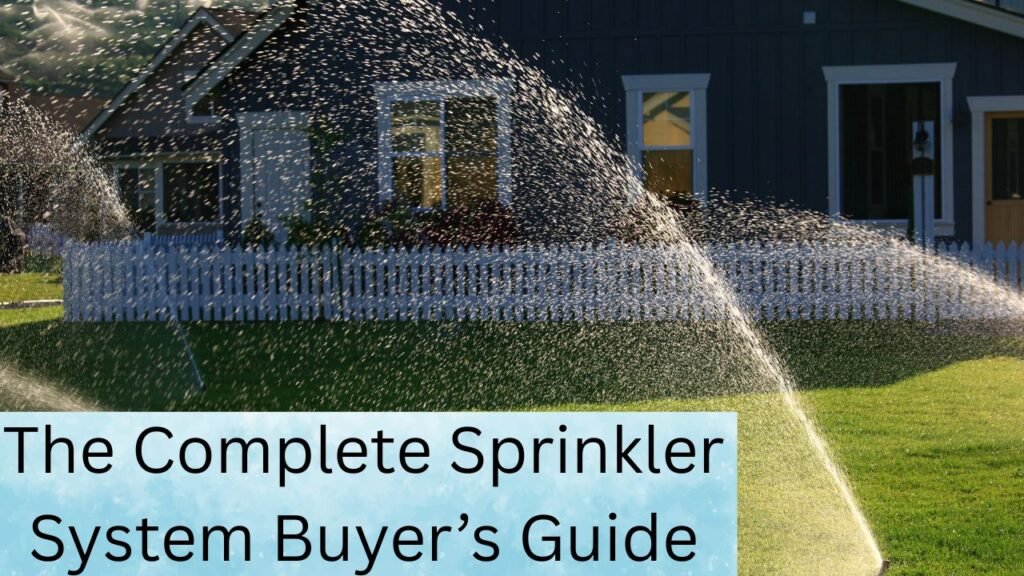
Understanding Your Needs: Start with the Basics
Before diving into sprinkler types, take a moment to evaluate your specific requirements. Here’s a handy checklist to guide you:
- Property Size & Layout: Measure your lawn and garden areas. Note any slopes or irregular shapes.
- Water Source & Pressure: Determine if you’re using municipal water or a well, and check the water pressure.
- Plant Types: Identify the vegetation in your yard. Different plants have varying water needs.
- Budget: Set a realistic budget, factoring in installation and maintenance costs.
- Water Conservation Goals: Consider if you want to prioritize water-saving features.
- Climate & Rainfall: Understand your local climate to tailor your watering schedule.
- Future Expansion: Think about potential landscaping changes or additions.
Plant-Specific Watering Needs in the USA:
- St. Augustine Grass: Thrives with consistent moisture; ideal for in-ground systems with rotary heads.
- Azaleas: Prefer moist, well-drained soil; benefit from drip irrigation to prevent root rot.
- Vegetable Gardens: Require precise watering; drip systems deliver water directly to roots, minimizing disease risk.
Types of Sprinkler Systems: Which One Fits Your Landscape?
Understanding the different sprinkler systems can help you choose the best one for your yard.Custom Lawn+1DripWorks+1
| System Type | Best For | Pros | Cons | Estimated Cost (USA) | Lifespan Expectancy |
|---|---|---|---|---|---|
| Above-Ground | Small to medium lawns, temporary setups | Easy to install, budget-friendly, portable | Less efficient, can be unsightly, prone to damage | $1,800 – $2,000 | 5-10 years |
| In-Ground | Medium to large lawns, permanent solutions | Automated, customizable zones, hidden from view | Higher upfront cost, requires professional installation | $2,600 – $4,970 | 15-20 years |
| Drip Irrigation | Gardens, flower beds, shrubs | Water-efficient, reduces evaporation, targets roots directly | Can clog if not maintained, less effective for lawns | $310 – $815 | 10-15 years |
| Micro-Sprinkler | Small gardens, potted plants | Gentle watering, adjustable flow rates, ideal for delicate plants | Limited coverage, not suitable for large areas | Varies | 5-10 years |
Water Conservation Goals: Smart Choices for a Sustainable Future
Incorporating water-saving technologies not only benefits the environment but also reduces your utility bills.
- Rain Sensors: Automatically shut off your system during rainfall, preventing overwatering.
- Cycle and Soak Method: Breaks watering into intervals, allowing soil to absorb water efficiently and reducing runoff.
- Soil Moisture Sensors: Measure soil moisture levels to determine when watering is necessary, avoiding unnecessary irrigation.
- Smart Controllers: Adjust watering schedules based on weather forecasts and soil conditions.Bankrate+5Rainbird+5US EPA+5
Climate and Rainfall: Tailoring Your System to Regional Needs
Different regions in the USA have unique climate considerations:Energy.gov+1Better Homes & Gardens+1
- Arid Southwest: Opt for drip irrigation to conserve water and target plant roots directly.
- Humid Southeast: In-ground systems with rain sensors help manage frequent rainfall and prevent overwatering.
- Cold Northeast: Ensure your system has proper winterization features to prevent freeze damage.The SpruceLawnCare21
Future Expansion: Planning Ahead
If you anticipate changes to your landscape, choose a modular system that allows for easy expansion. This flexibility ensures your irrigation system can adapt to new garden beds, lawns, or other additions without a complete overhaul.
Sprinkler Heads: Matching Types to Your Needs
Selecting the right sprinkler head is crucial for efficient watering:
- Spray Heads: Ideal for small, flat areas; provide even coverage.
- Rotary Nozzles: Suitable for slopes and larger areas; deliver water slowly to prevent runoff.
- Impact Sprinklers: Cover large distances; durable and adjustable.
- Drip Emitters: Deliver water directly to plant roots; perfect for gardens and flower beds.
- Micro-Sprayers: Provide gentle watering for delicate plants; adjustable flow rates.The SpruceUS EPA
Smart Sprinkler Systems: Embracing Technology
Modern smart controllers offer advanced features:
- Weather-Based Adjustments: Modify watering schedules based on real-time weather data.
- Remote Access: Control your system via smartphone apps.
- Zone Customization: Set different watering schedules for various zones in your yard.
- Water Usage Reports: Monitor and analyze your water consumption.US EPA+5hunterirrigation.com+5US EPA+5
Popular Brands in the USA:
- Rachio: Offers intuitive app controls and weather intelligence.
- RainMachine: Provides detailed analytics and integrates with smart home systems.
- Orbit B-hyve: Features voice control compatibility and easy scheduling.WIRED
Installation and Maintenance: Ensuring Longevity
Installation Tips:
- DIY vs. Professional: While above-ground systems can be DIY projects, in-ground systems often require professional installation.
- Planning: Map out your zones and choose appropriate sprinkler heads for each area.
- Testing: After installation, test the system to ensure even coverage and proper function.
Maintenance Checklist:
- Regular Inspections: Check for leaks, clogs, and damaged components.
- Seasonal Adjustments: Modify watering schedules based on seasonal needs.
- Winterization: In colder climates, drain and insulate your system to prevent freeze damage.
Troubleshooting Common Issues:
- Uneven Coverage: Adjust sprinkler heads and check for clogs.
- Low Pressure: Inspect for leaks or valve issues.
- Controller Malfunctions: Reset the system or consult the manufacturer’s support.US EPA
Permitting and Regulations in the USA
Before installation, check local regulations:
- EPA WaterSense Program: Offers guidelines and certified products for water-efficient systems.
- Local Ordinances: Some municipalities have specific requirements or restrictions. Visit your local government’s website or contact their office for details.
Conclusion: Your 2025 Sprinkler System Decision Made Simple
Choosing the right sprinkler system in 2025 isn’t just about watering your lawn—it’s about making an informed investment that saves water, supports your landscaping goals, and works well in your local climate.
From smart sprinkler controllers that use weather-based data to drip systems that nurture vegetable beds with precision, there’s a perfect system out there for your yard size, plant types, and budget. What matters most is that your choice aligns with:
- ✅ Your region’s rainfall and temperature patterns
- ✅ The watering needs of your plants and grass types (like St. Augustine, Bermuda, or azaleas)
- ✅ Your goals around water conservation and future expansion
- ✅ Your ability to maintain or upgrade the system over time
Whether you’re going DIY or hiring a pro, this guide has given you all the key info to move forward with clarity. And remember — choosing the right sprinkler head type, zoning plan, or smart system doesn’t just help your yard. It helps your wallet and the environment, too.

